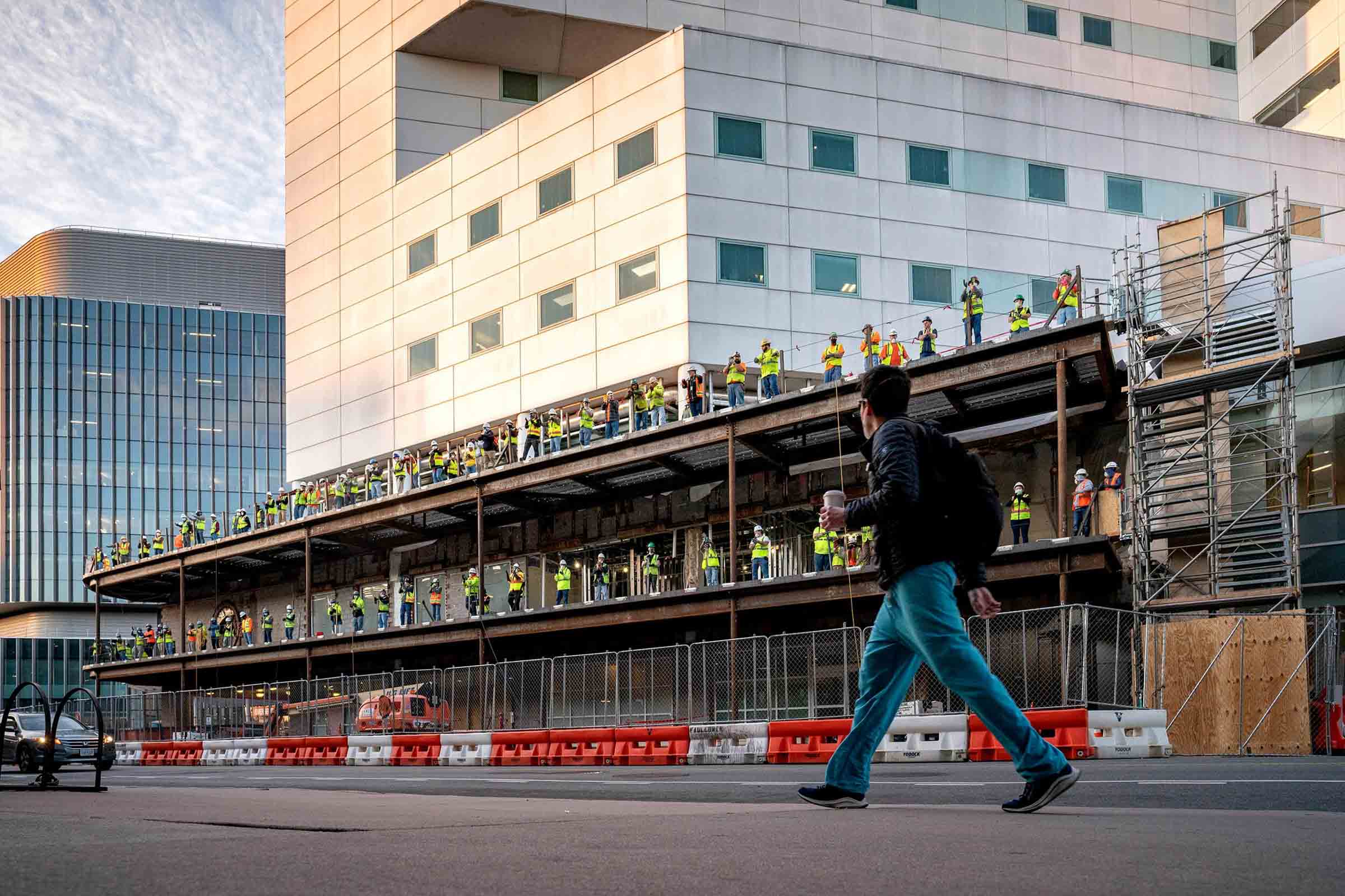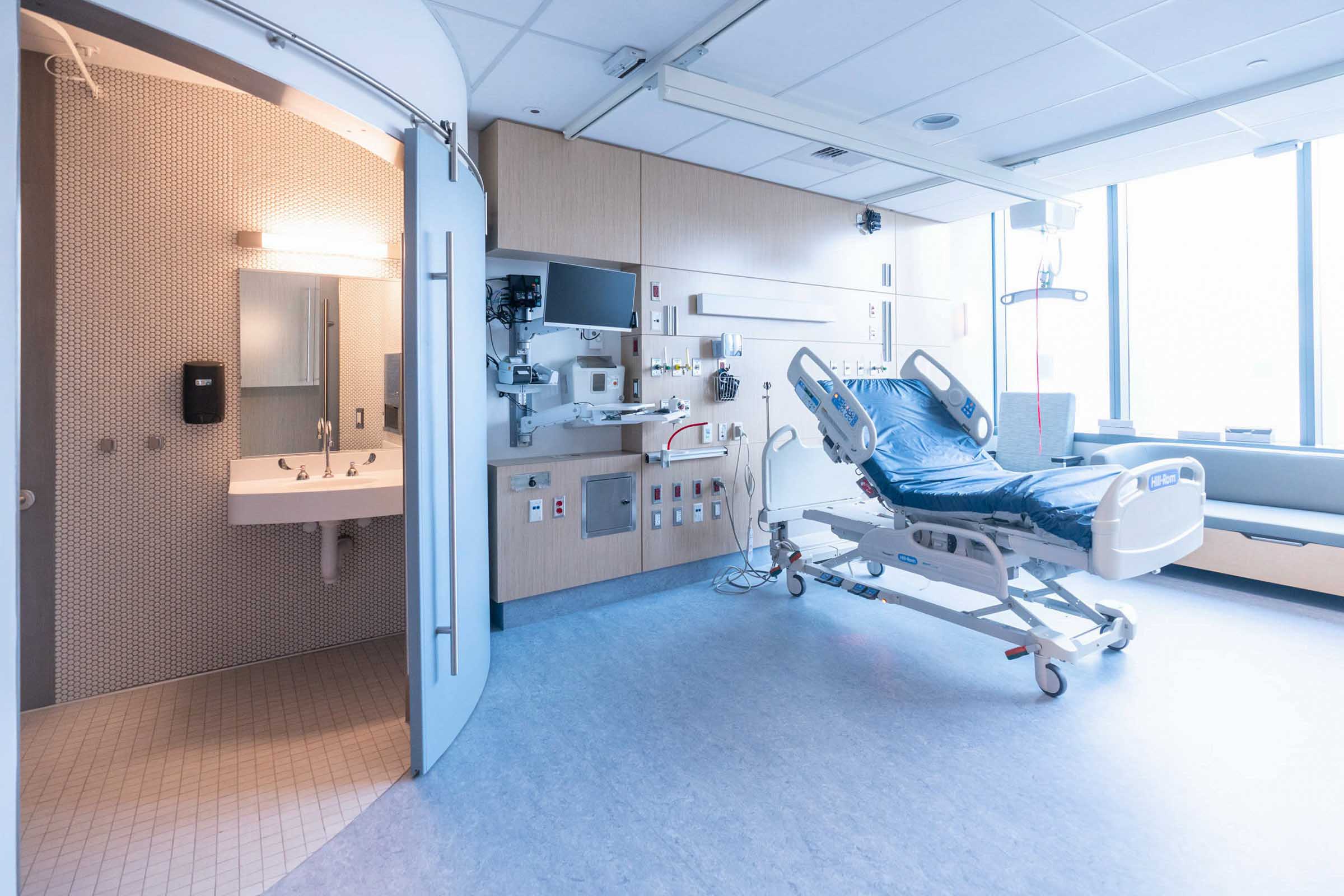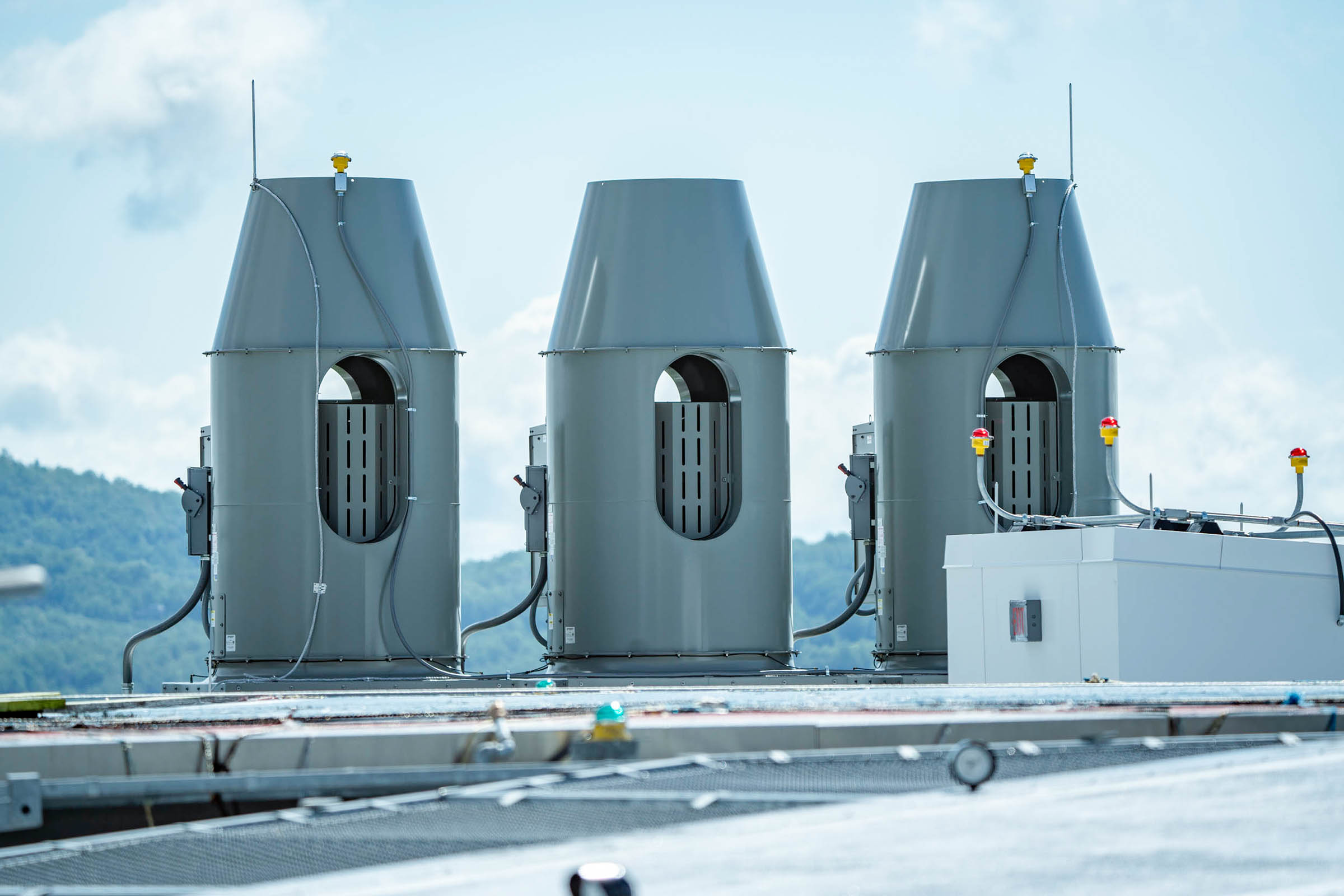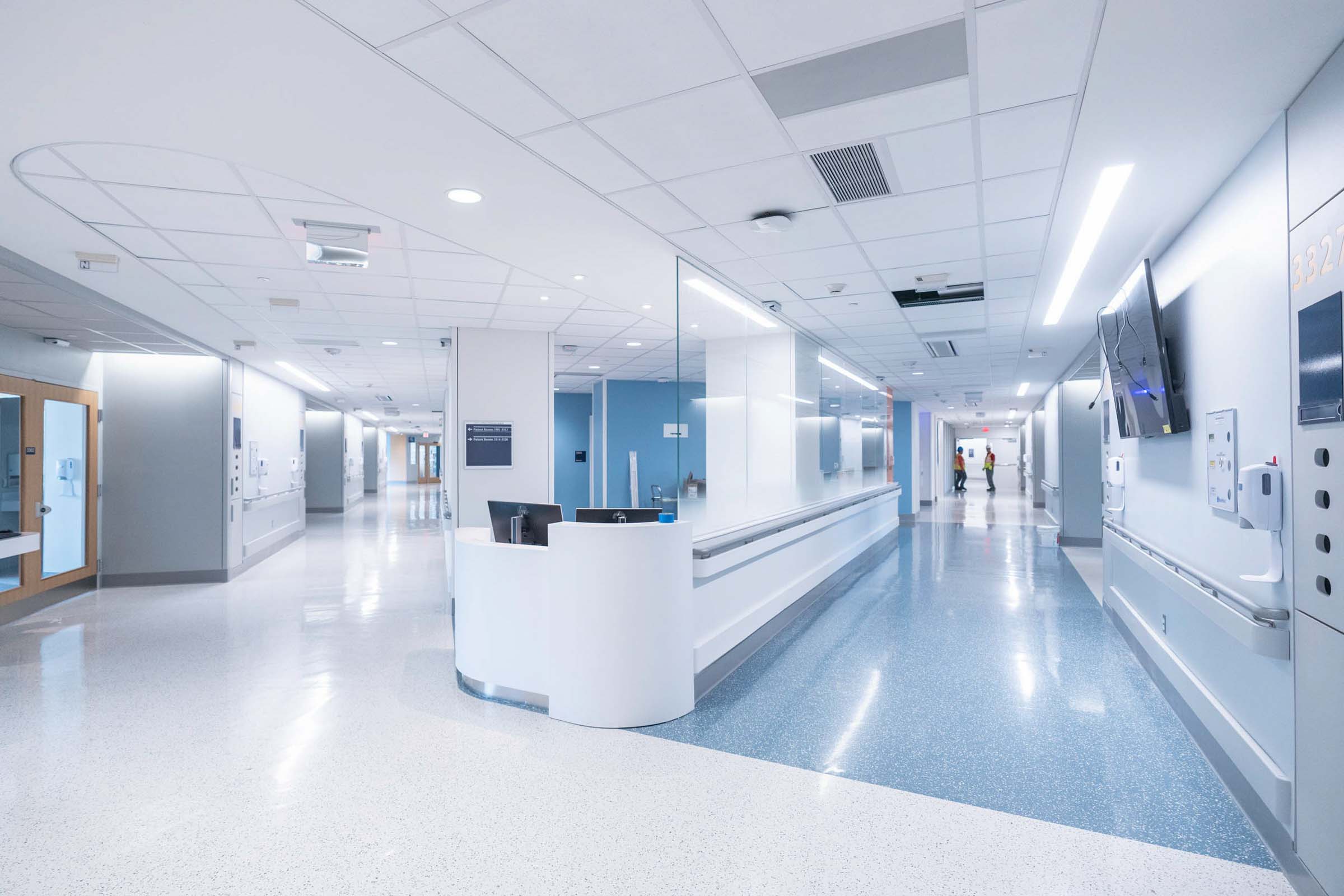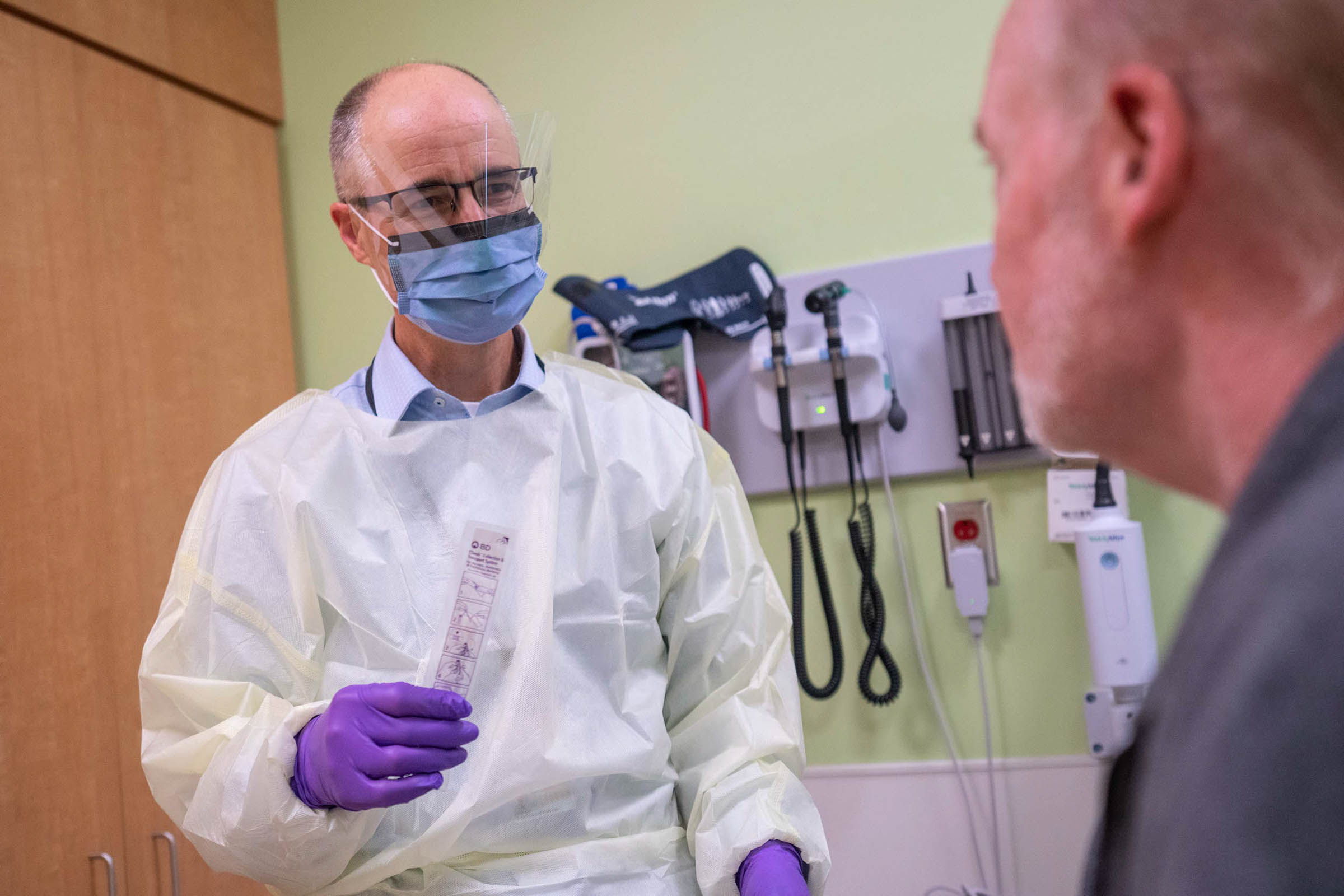Now, air from 56 patient rooms on the third and fifth floors, which were opened in phases following the installation of the new fan, moves up to a mechanical space on the roof where a few facilities staff, all wearing personal protective equipment, work to safely filter and discharge it. Their work, and the new system, helps protect both patients and health care workers while conserving PPE that would have otherwise been necessary in public spaces throughout the building.
“Access to these negative airflow rooms helps us in every way,” said Dr. Paul Helgerson, section head of Hospital Medicine, who oversees service lines including the ICU. “It was a lot of work, but it was amazing – no one batted an eye. Everyone understood what we were trying to accomplish, and what was at stake.”
“Every decision we made has been based on the needs of the clinical staff, and treating our patients,” Wilson said. “That’s our mantra.”
“It was certainly a big lift, but everyone worked so hard, 110%, for weeks, to get ready for this,” Harkins said.
Looking back on those whirlwind weeks now makes the whole team proud.
“Honestly, it was rewarding,” Hoy said. “It was obvious that we had the means to make a difference for our patients and for our colleagues, and we pulled together to do what we needed to do.”
Moving In, in Record Time
Think about how long it might take you to move from one house to another – planning the layout of each room and acquiring furniture, packing and unpacking boxes, putting each kitchen tool or bedroom lamp in the room where it belongs, setting up cable, water, electricity, internet.
Then, imagine that all of the rooms in your new house suddenly had to function differently.
That is basically the task that UVA Health was facing. They had been planning the move to the new tower for months, of course, but they had been planning for cardiac, orthopedic and organ transplant units. Now, they needed to plan for infectious disease ICUs.
“All of the teams who had been planning for the move into the new tower had to be redirected to focus on the new plan,” Reyes said.
As Harkins and his team finished retrofitting the tower, Reyes and her colleagues got to work, aiming to move all necessary equipment – and people – into the space as soon as possible.

